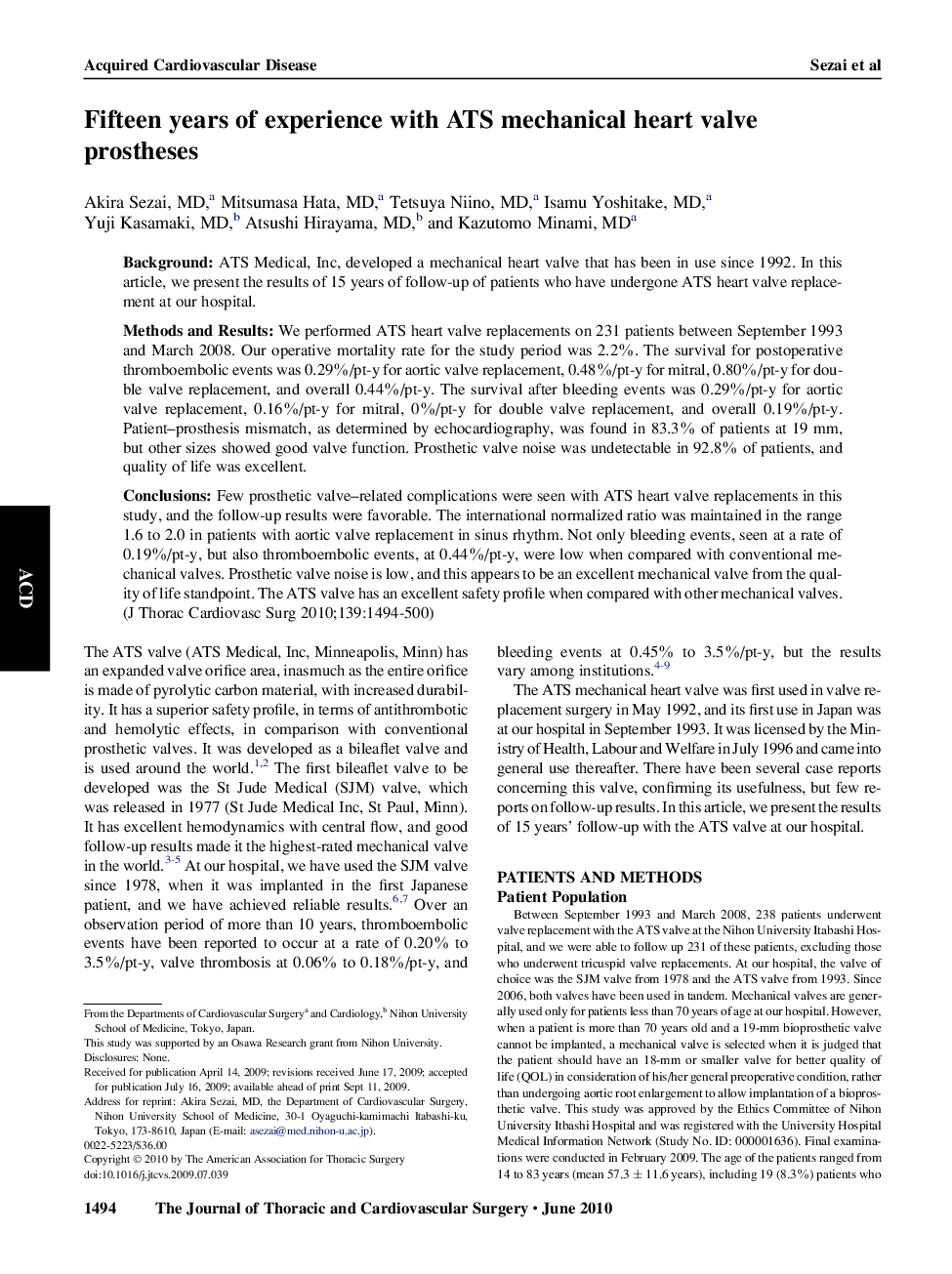| Article ID | Journal | Published Year | Pages | File Type |
|---|---|---|---|---|
| 2984092 | The Journal of Thoracic and Cardiovascular Surgery | 2010 | 7 Pages |
BackgroundATS Medical, Inc, developed a mechanical heart valve that has been in use since 1992. In this article, we present the results of 15 years of follow-up of patients who have undergone ATS heart valve replacement at our hospital.Methods and ResultsWe performed ATS heart valve replacements on 231 patients between September 1993 and March 2008. Our operative mortality rate for the study period was 2.2%. The survival for postoperative thromboembolic events was 0.29%/pt-y for aortic valve replacement, 0.48%/pt-y for mitral, 0.80%/pt-y for double valve replacement, and overall 0.44%/pt-y. The survival after bleeding events was 0.29%/pt-y for aortic valve replacement, 0.16%/pt-y for mitral, 0%/pt-y for double valve replacement, and overall 0.19%/pt-y. Patient–prosthesis mismatch, as determined by echocardiography, was found in 83.3% of patients at 19 mm, but other sizes showed good valve function. Prosthetic valve noise was undetectable in 92.8% of patients, and quality of life was excellent.ConclusionsFew prosthetic valve–related complications were seen with ATS heart valve replacements in this study, and the follow-up results were favorable. The international normalized ratio was maintained in the range 1.6 to 2.0 in patients with aortic valve replacement in sinus rhythm. Not only bleeding events, seen at a rate of 0.19%/pt-y, but also thromboembolic events, at 0.44%/pt-y, were low when compared with conventional mechanical valves. Prosthetic valve noise is low, and this appears to be an excellent mechanical valve from the quality of life standpoint. The ATS valve has an excellent safety profile when compared with other mechanical valves.
